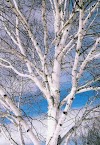Banyan is the 'national tree' of India.The two largest banyan trees in India are in the state garden of Kolkata and Satara garden in Maharashtra. The original root circle of Vatavriksha of Shivpur is 42 feet and other small 230 pillars. The shadow of their branch branches extends in a circumference of about 1000 feet. Satara's Vat tree, 'Kabir Vat', has a circumference of 1,587 feet and 565 feet north-south and 442 feet east-west. Lanka has a vat tree, which has 340 large and 3000 small columns.The branches of the banyan tree spread far and deep. No other tree has such deep roots.Branches are formed by the roots and more stems and due to this characteristic and long life, this tree is considered eternal.
Vat, i.e. banyan is also called 'Akshaya Vat', because this tree is never destroyed.Even now the banyan tree is considered as the center of rural life and even today the council of the village conducts panchayat under the shade of this tree.
The banyan shade is thick, large, cool and blissful in summers. In its shadow, hundreds, thousands of people can sit together.
The fruit:-
Banyan fruits are small like peepal fruits. Normally these fruits are not eaten, but during its famine, people can subsist on its function. Its wood is soft and porous. Hence only firewood is used.
Banyan leaves fall in the months of February-March and later new leaves emerge. The fruit turns red when ripe.White juice comes out from its tree, which produces a sticky substance which is used by
traffickers to trap birds. Its juice (akshir), bark, and leaves are used in Ayurvedic medicines to prevent many diseases. Animals, especially goats, eat its leaves with great interest. Lacquer bugs can be placed on the tree from which lacquer can be obtained.
Trees bear fruits in the summer season. Generally, fruits arrive and ripen in mid-February to May. Sometimes these fruits can be seen till September. In some places, the banyan delays fruits and lasts until December. Its fruits are small, round and stalkless. They grow on the branches at the same places where the leaves grow. Its fruits grow in pairs and are dense and dense.
Mythological belief:-
It is believed that by worshiping it and giving water to its root, one attains virtue. This tree is a symbol of Trimurti, Vishnu in its bark, Brahma in the root and Shiva in the branches is considered to be inhabited. Just as the Peepal is considered a symbol of Vishnu, similarly the banyan is considered Shiva.
According to Agnipuran the banyan signifies emission. That is why people who want to have children worship it. For this reason the banyan is not cut. Its leaves are fed to animals in a famine. This tree is considered eternal due to its characteristics and long life. That is why this tree is also called Akshayavat.It is popularly believed that a goat has to be sacrificed as a penance for cutting down a banyan tree. There is also a story about the etymology of flora in Vamanapurana. When the lotus appeared from the navel of Vishnu in Ashwin month, various trees were produced from other devas as well. At the same time, the tree of Vat was born from 'Manibhadra', the king of the Yakshas.
The structure:-
Banyan is a large, tall and very large tree spread over an area. Its height can range from 20 meters to 30 meters. It has often been seen that the banyan stem, developed automatically in the forest, is not too thick. In contrast, banyan stems found in open and dry places are thicker. Its trunk rises up and divides into several branches and sub-branches.
A feature of its branches and sub-branches is that it extends all around. Its age has an effect on the thickness and appearance of the stem and branches. The trunk and branches of small and new banyan trees are smooth and the trunk and branches of old trees are rough and crusted. The long, wide circles of the trunk of this type of trees do not look round, but look like a cluster of many wire-like pots.
jatas:-
Jatas emerge from the banyan branches. Initially they are thin and swing downwards. After some time they reach the ground and start taking food juices from inside the ground. They grow slowly and after a long time they become thick, hard and strong like a stem and are able to bear the burden of the tree. Very old banyan trees greatly expand their physique with coils and spread over a wide area.Their stems and jats become like a cave, in which individuals can sit or sleep. Banyan is called Jatajadhari Mahatma because of its long jatas.
The leaves:-
On the thin branches of the banyan, large and round oval leaves emerge on all sides. But only one leaf comes out from one place. The length of the leaves varies from 10 cm to 20 cm and width from 5 cm to 13 cm. Banyan leaves are very thick and are attached to the dal with a small strong stalk.The leaves are smooth on one side and their color is dark green. The other side of the leaves is not smooth and the color is light green. New leaves usually emerge in February-March. Sometimes new leaves come out in September-October. The new leaves are red and very beautiful.




![kamal [Lotus] ka phul all history](https://blogger.googleusercontent.com/img/b/R29vZ2xl/AVvXsEiozKaLrtdgRPhNgswIIMiiNDNByf9KpWiBCca_FVEsFJYNRK1FXYuvOmWZUkN8u9mX4VSiBcieBjGF2eSDz61Tk41sdpMwnW9muW8Tsf2EMADaR_ipENGlOUh56fRyWdsujy976mIgYIqs/w100/download.jpg)









0 Comments